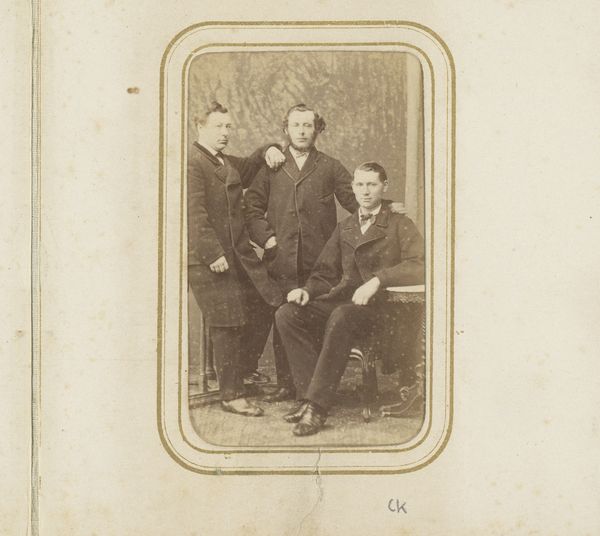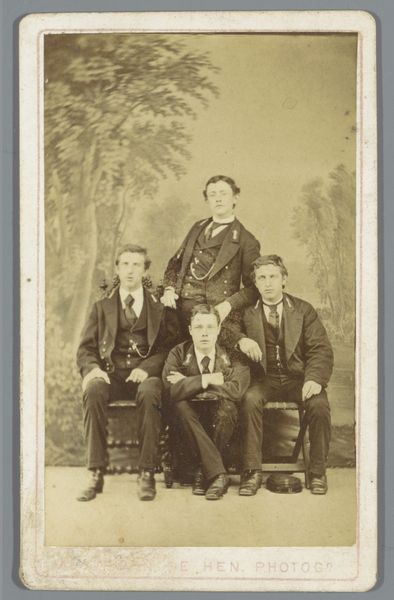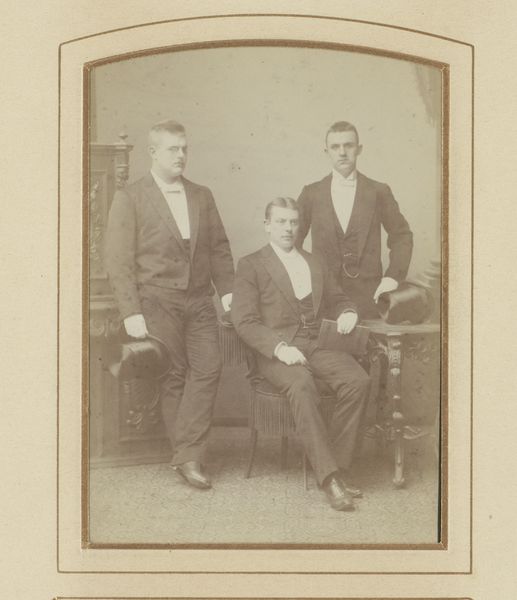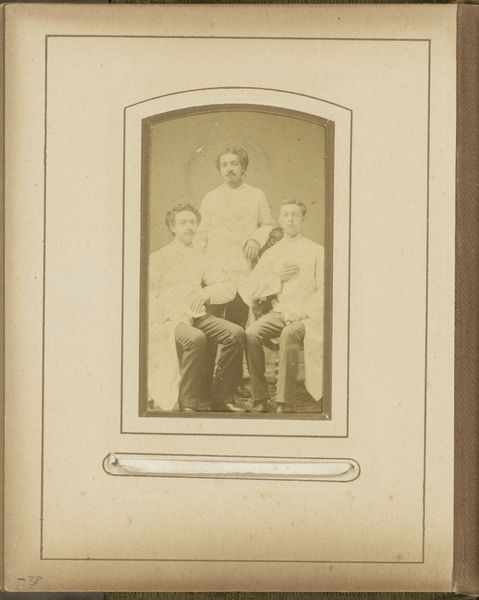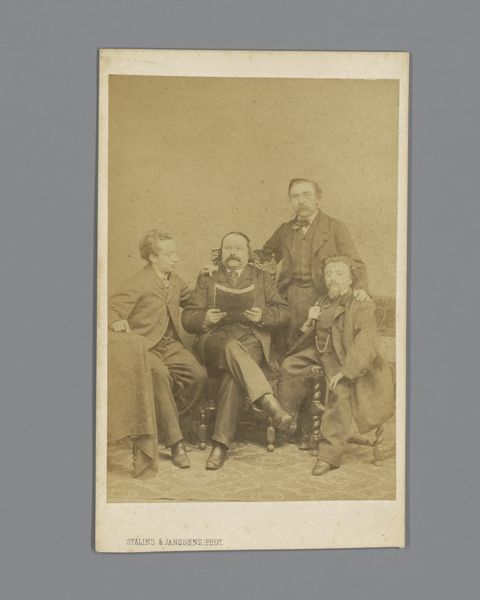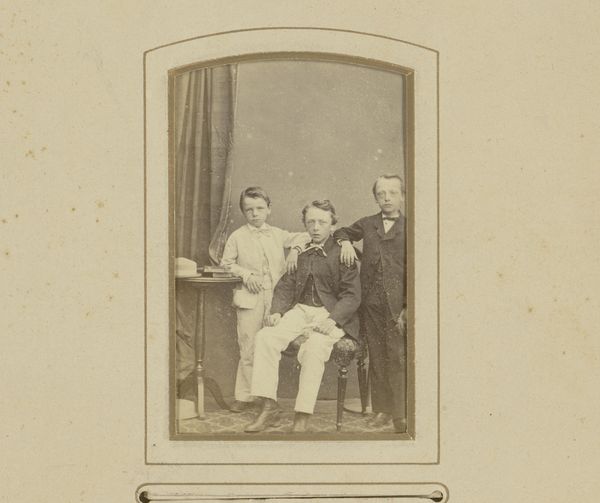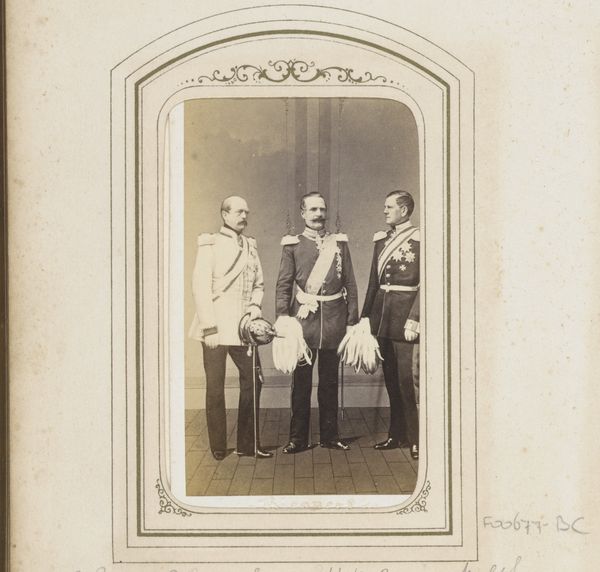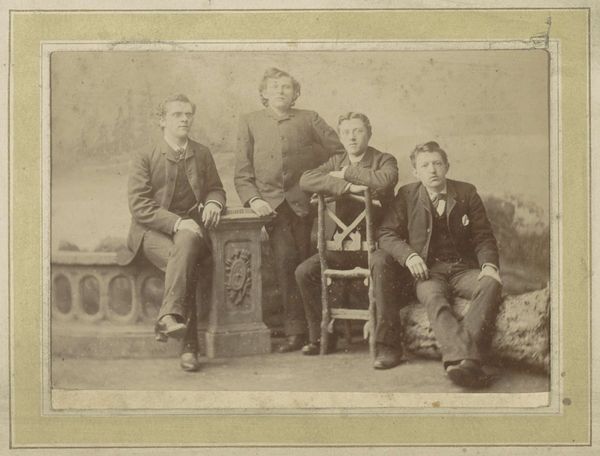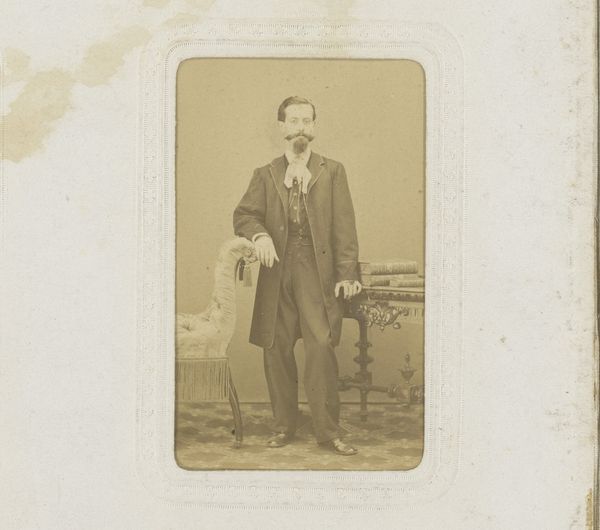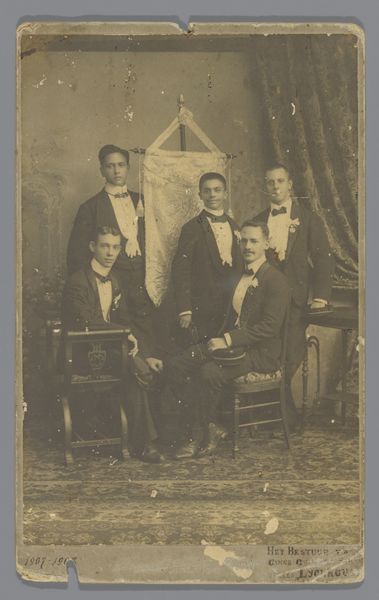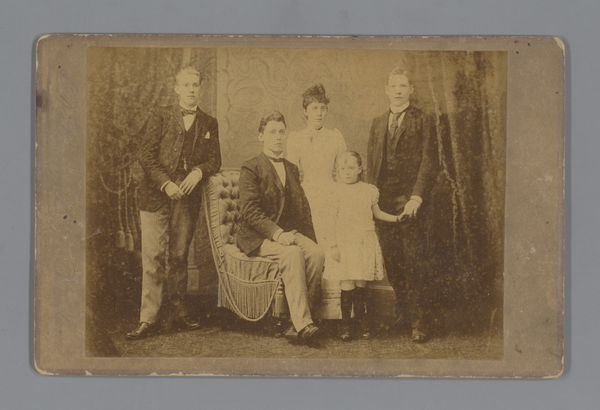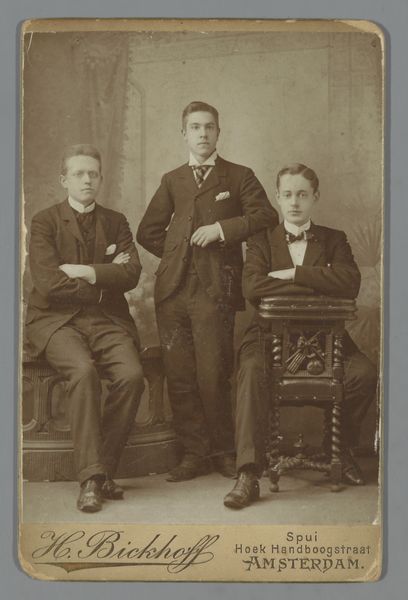
photography
#
portrait
#
photography
#
academic-art
#
realism
Dimensions: height 221 mm, width 165 mm
Copyright: Rijks Museum: Open Domain
Editor: So, here we have "Portret van drie Europese mannen," taken between 1863 and 1866 by Woodbury & Page. It's a photograph, and something about the stiff poses gives it a really formal, almost imposing feel. What's your take on this portrait? Curator: Imposing is a good word. Considering the historical context, these men, positioned with such deliberate composure, are asserting a very particular image of European masculinity and power, one rooted in colonial structures. Notice the visual hierarchy at play. The man seated with his legs crossed, in lighter trousers, assumes a relaxed dominance. How does that compare with the man in the center, who is standing, hand in his coat? Editor: That's interesting. I see the seated man as more relaxed, like he's in charge. But what does it mean that he’s "in charge?" Curator: Precisely! That's what we need to consider. Think about how photographic portraits like this were consumed and disseminated in the 19th century. How might they have contributed to the construction of racial and gendered hierarchies? Who did photography exclude, and who did it make visible? Editor: So you’re saying this image isn’t just a neutral depiction of three men; it’s actively participating in a system of power? It also strikes me that while they might be trying to project respectability and wealth, as three similarly dressed men, they're not particularly individualized. Curator: Exactly! What assumptions can we challenge through their image? And who do you think was absent from this image and from that era in general? Editor: I guess, overall, I learned to be much more critical of what seems to be an average image. The poses, clothing – everything sends a deliberate message. Curator: And recognizing that deliberate construction allows us to unpack the power dynamics inherent in these historical images and think more critically about representation today.
Comments
No comments
Be the first to comment and join the conversation on the ultimate creative platform.
